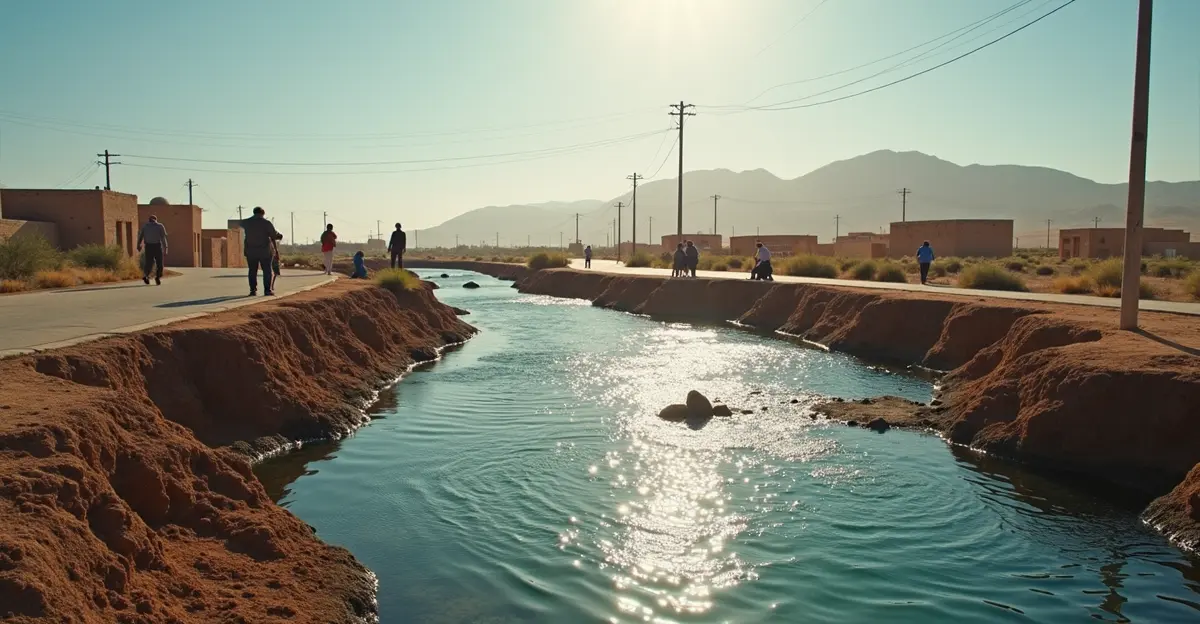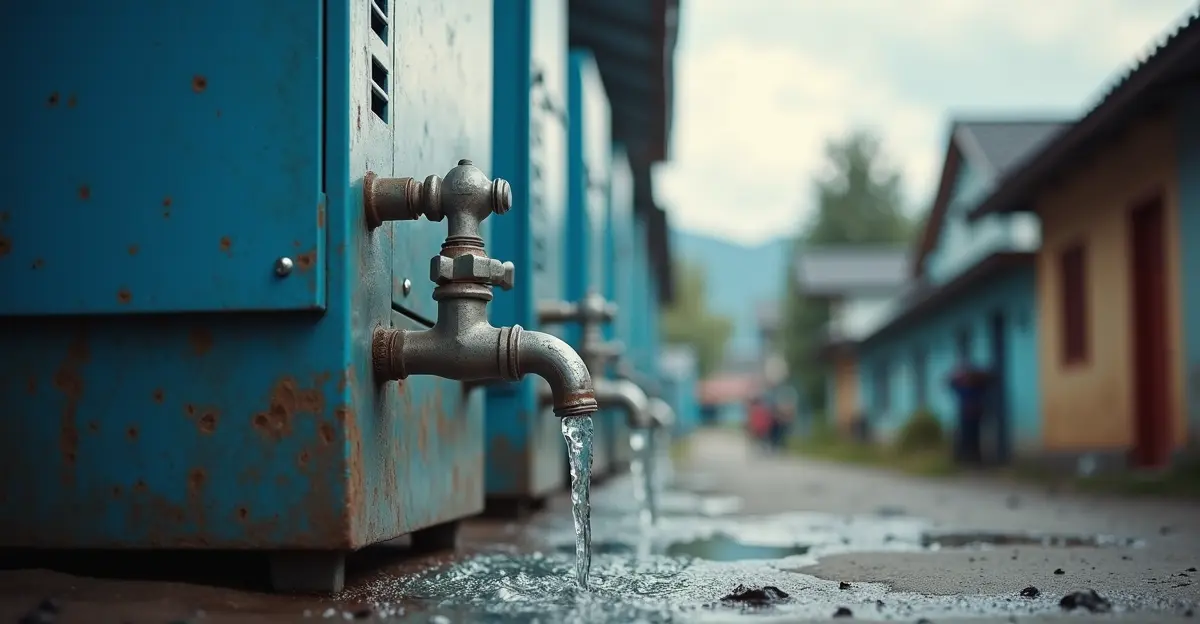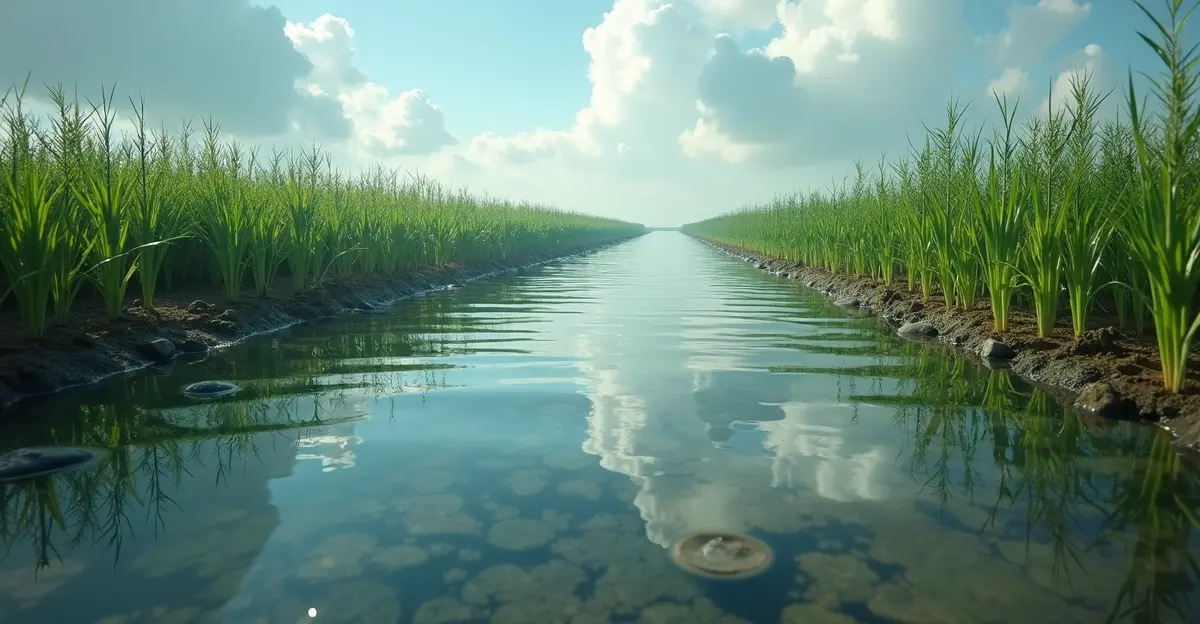Middle Eastern nations deploy advanced early warning systems using remote sensing and machine learning to predict water scarcity and drought. Regional collaboration integrates satellite data and analytics for improved water resource management.

Revolutionary Drought Prediction Technology Deployed Across Middle East
Regional governments across the Middle East have launched a groundbreaking collaborative initiative to deploy advanced early warning systems for water scarcity and drought prediction. The systems leverage cutting-edge remote sensing technology and sophisticated analytics to provide unprecedented forecasting capabilities for one of the world's most water-stressed regions.
Advanced Technology Integration
The newly deployed systems incorporate multiple satellite data sources and machine learning algorithms to monitor water resources across the region. According to recent research published in Communications Earth & Environment, the Geographically Weighted Temperature Vegetation Dryness Index (GWTVDI) represents a significant advancement over traditional drought monitoring methods. 'This spatially adaptive approach allows us to capture localized drought hotspots that broader indices typically miss,' explains Dr. Ahmed Al-Mansouri, lead researcher on the project.
The systems integrate data from various sources including precipitation measurements from CHIRPS and GPCC satellites, evapotranspiration data from WaPOR and MOD16 systems, and thermal imaging from advanced remote sensing platforms. This comprehensive data integration enables real-time monitoring of water stress across agricultural lands, urban centers, and natural ecosystems.
Regional Collaboration and Implementation
The initiative represents one of the most significant regional cooperation efforts in water management history. Multiple Middle Eastern nations have contributed resources and expertise to establish a unified monitoring network. 'This collaboration marks a turning point in how we approach water security in our region,' states Minister of Water Resources, Fatima Al-Rashid. 'By sharing data and resources, we can anticipate water crises before they become emergencies.'
The International Water Management Institute (IWMI) has played a crucial role in validating and calibrating the remote sensing data against ground measurements. As detailed in their recent analysis, the institute has worked extensively to minimize biases in satellite data, ensuring accurate water assessment and modeling for practical applications.
Addressing Growing Water Challenges
The deployment comes at a critical time for the Middle East, where water scarcity has intensified significantly in recent decades. A comprehensive 2025 study revealed that drought-affected areas in the MENA region increased from 12.9% to 19.4% between 1981 and 2021. The Standardized Precipitation Evapotranspiration Index (SPEI), which incorporates temperature effects, showed more pronounced drought frequency and severity increases than traditional indices.
'The SPEI captures 15% more areas affected by severe to extreme droughts in arid regions compared to SPI,' notes climate scientist Dr. Sarah Johnson. 'This demonstrates the growing impact of rising temperatures on water availability in the region.'
Practical Applications and Future Outlook
The early warning systems are already providing actionable insights for water resource management. Agricultural authorities are using the data to optimize irrigation schedules, while urban planners are implementing water conservation measures based on predicted scarcity patterns. The Mercy Corps' Middle East Anticipatory Climate Action Model (MEACAM), as described in their platform overview, enables anticipatory action by predicting flash flooding and agricultural drought while estimating human exposure to these hazards.
Looking ahead, researchers project that drought risks will continue to increase in central and southern regions of the Middle East by the end of the century under high-emission scenarios. The new early warning systems provide a critical tool for building climate resilience and ensuring water security for future generations. As Dr. Al-Mansouri concludes, 'This technology doesn't just predict droughts—it gives us the power to prevent water crises before they devastate communities and economies.'

 Nederlands
Nederlands
 English
English
 Deutsch
Deutsch
 Français
Français
 Español
Español
 Português
Português









